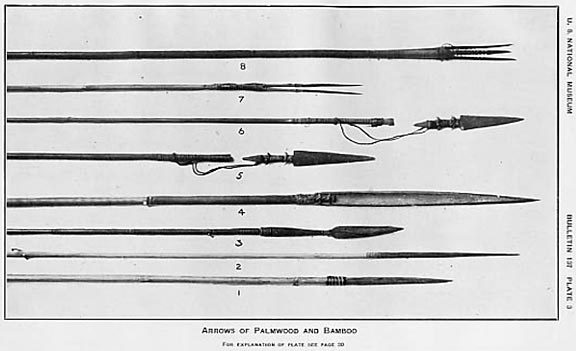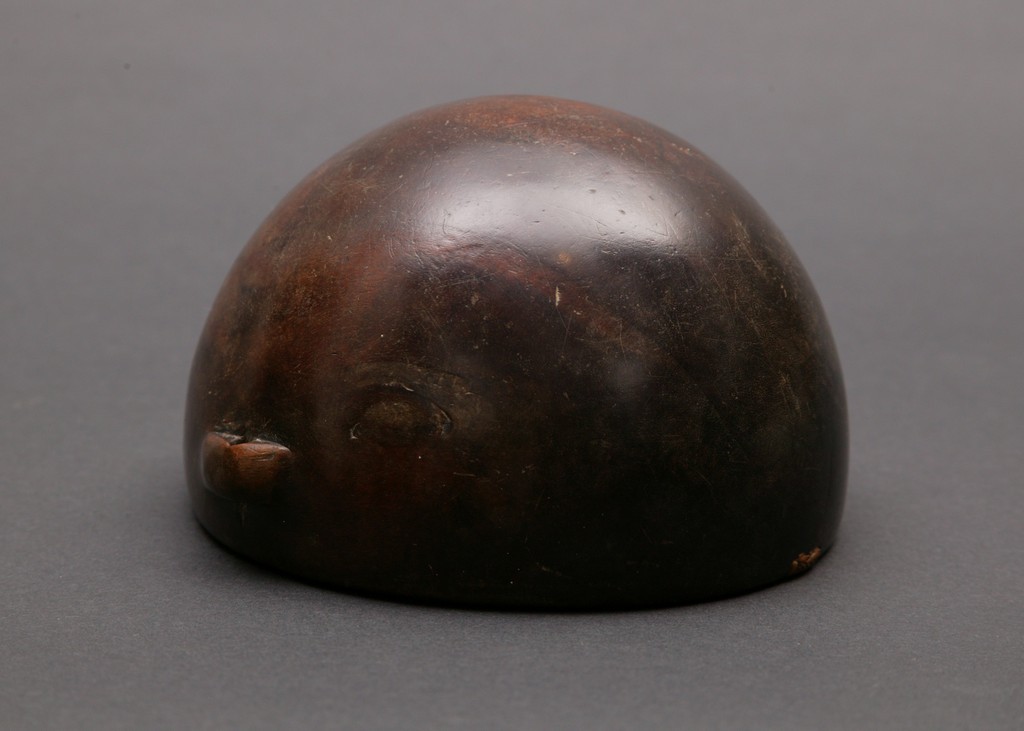
A pinahig, having a single edged blade of chopper configuration widening and thinning away from the hilt. The hilt consists of a single piece of wood wrapped at each end with rattan. The tip of the tang is visible and folded over and the end of the hilt. The open faced scabbard, or hikot, is of the same construction as those above, but inletted with the contour of this blade. This was collected in the mid-1970s from one of the shops just outside of the perimeter of Clark Air Force Base. Third quarter, 20th century. Overall length, blade and handle: 54 cm. (21.3 inches); blade length: 38.6 cm. (15.2 inches).
The pinahig has a blade which becomes wider and thinner towards a relatively rounded tip obviously adapted entirely for the cut. A wooden handle surrounds a tang which may extend the full length of the handle and be folded back upon itself to secure the handle. As may be seen from example 7 below, however, the hollow metal handle construction may also be associated with this blade form.

The Collection of Primitive Weapons and Armor of the Philippine Islands
in the United States National Museum
Simple and compound arrowheads of palmwood and bamboo.
1. Palmwood arrowhead and bamboo shaft. Moro, Mindanao.
2. Reed arrow with palmwood foreshaft. Moro, Mindanao.
3. Bamboo arrow with palmwood foreshaft; poisoned bamboo arrow point inserted in foreshaft. Bikol, Luzon.
4. Large arrow of bamboo with arrowhead of split bamboo, Bagobo, Mindanao.
5. Triagular shape arrowhead of bamboo, harpoon shaft. Negritos, Zambales Mouutains, Luzon.
6. Barbed, triangular bamboo arrowhead, harpoon shaft. Negritos, Zambales Mountains, Luzon Island.
7. Fish arrow with compound head of bamboo. Bagobo, Mindanao.
8. Three-pronged or trident compound arrow. Negritos. Zambales Mountains, Luzon.

No comments:
Post a Comment